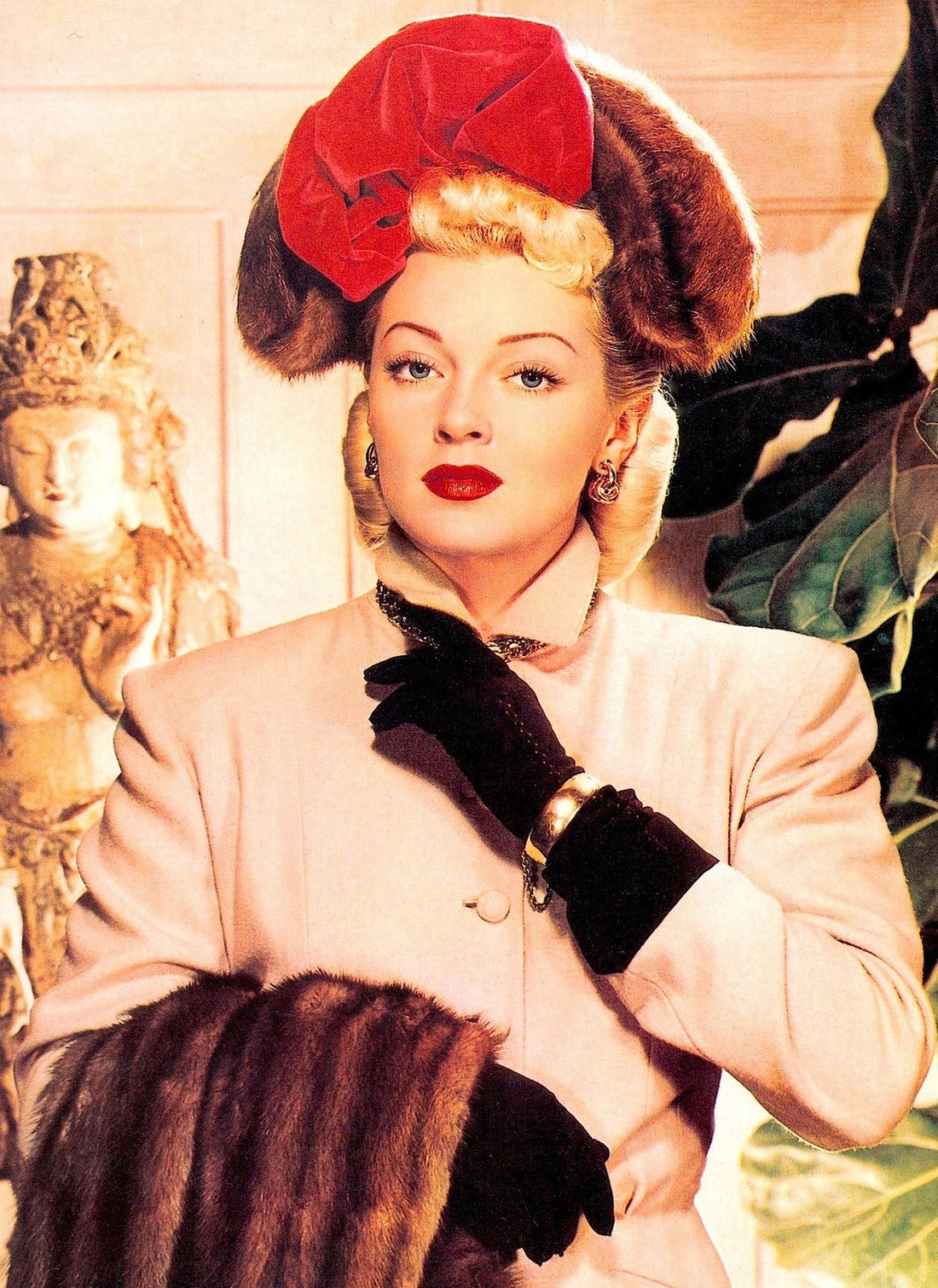World War II, Pearl Harbor, Rosie the Riveter, USO, Rationing, Women’s Army Corps, Great Depression Ends, Housing Boom, Baby Boom, Jackie Robinson, Color Television, Big Band Music, Swing Era, Zoot Suits and Bikinis all defined the 1940s.
Women Return to the Workforce
The first half of the 1940s was a tough time. World War II was ravaging the globe, forcing food and supplies to be rationed including many jewelry making materials. The war ended the great depression that had engulfed the United States for the previous decade and it also once again catapulted women into the workforce to fill-in for men who were off fighting for the country. Rosie the Riveter, the central figure in an ad campaign to recruit women to work in the defense industries during World War II was everywhere, encouraging patriotic women to work outside the home to help the war effort. Women were also widely employed in the Women’s Army Corps to assist the armed services.

Jewelry manufacturers were enlisted to make compasses and other necessary items for war, yet they did still manage to make some jewelry. Materials, such as gemstones, were hard to come by because of import/export issues and metals were being commandeered for the war effort. Wealthy customers who wanted jewelry sometimes took existing pieces to their favorite jeweler who took the items apart and refashioned them for the styles of the time. Popular motifs included patriotic themes such as flags, eagles, anything red, white and blue as well as tank bracelets, which were oversized pieces inspired by the tire tread marks left by the military vehicles they are named after.
Rose Gold Was on Trend
Women were no longer piling on the jewelry as had been customary in previous decades instead limiting their jewels to a couple of pieces. Women returning to the workforce were wearing suits that were the perfect canvas for the oversized brooches and bracelets that characterized the decade. Gold was in short supply so to stretch the precious metal it was often alloyed with copper which gave it a lovely rosy color that has come to be associated with retro jewelry. The pieces tended to be metal intensive and embellished with gems, the most frequently used were citrine, aquamarine and topaz often accented with rubies, sapphires or diamonds. Big bows, fan shapes and scrolls were an important part of the look. Since it was easier to get smaller gems, jewelry was sometimes designed with many small stones to create a big look.

The second half of the 1940s vastly improved when the war ended in May 1945. Jewelers who had been away at war returned to their craft, sometimes picking up stylistic elements that were in place before they left. It took a couple of years for the world to sort itself out after the war, but soon enough the economy began to boom --- especially with inexpensive houses and lots of babies, both of which were top priorities of this newly prosperous time. Jewelry styles began to evolve and change ushering in the good times of the next decade.
Featured image (top of page): Lana Turner on the cover of Photoplay Magazine, by Paul Hesse, October 1946 First: Gold, ruby and diamond bracelet, circa 1940s. Second: Gold, aquamarine and diamond brooch, circa 1940s.
Authored by Amber Michelle

